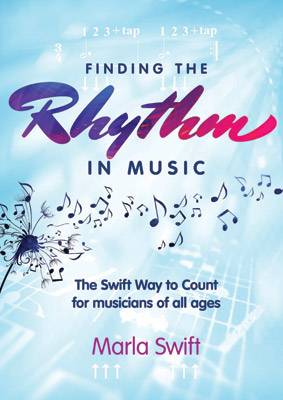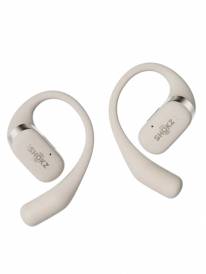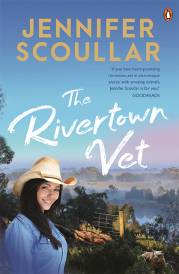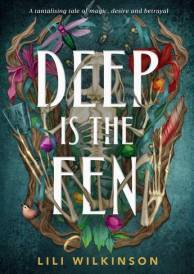Finding the Rhythm in Music

Finding the Rhythm in Music
The Swift Way to Count is, I believe, one of the simplest, most precise methods of learning how to understand and perform musical rhythms that you will ever find anywhere. It teaches how to really feel rhythm and combine this with the reading of music, giving a deep, instinctual understanding. Previously, many adults began music, only to find that they couldn't seem to make progress and so stopped again in disappointment.
How many of us would love to sing or play music in a group, or a band?
How many of us try to play the piano when we are young but give up along the way?
I believe that people worldwide struggle every day to put musical notes together into the right places. They tax their brains trying to count correctly, yet counting still remains elusive because the brain doesn't contain a beat; it thinks in concepts. The pitch of the notes may be perfectly correct, but if those notes don't correspond to the written music, the piece being sung or played will never sound the way it should and frustration will remain.
Marla Swift has worked with soloists Dame Joan Sutherland, Dame Kiri Tekanawa, Yvonne Kenny and Jose Carreras to name a few. She has performed in Music Festivals in the UK, Austria and Germany and has been a soloist and recording artist with the Melbourne Symphony Orchestra. Some of the many orchestras she has worked in over the years include the State Orchestra of Victoria, the Queensland Symphony Orchestra, and Queensland Philharmonic. She has been regularly heard on the Australian Broadcasting Commission and has travelled throughout Victoria, performing and lecturing to schools for the State Government.
The author says, "After a lifetime of teaching, performing and examining, I have found simple answers to the challenges of counting and I offer these to you."
Finding the Rhythm in Music
Australian Book Group
Author: Marla Swift
ISBN: 9780980283693
Price: $49.99
Interview with Marla Swift
Question: Why did you believe it was important to write The Swift Way to Count?
Marla Swift: Although I have met musical people all over the world, there was a general gap that I noticed at least 90% of the time, in the way they approached their reading of music. This gap was counting and no matter how much practice they did, they could never perform music the way they'd like or be able to aspire to professional level because of the sticking point - a non-grasping of the art of counting.
I wrote the book to truly address the fact that counting is integral to the reading of music not an after-thought. I wrote the book also because at least 90% of musical people whether young or old or in-between, needed a usable, simple method because they were finding that their counting was not intrinsic and was therefore holding back their progress. Any system that requires too much mental thought can fail. I believe my method takes away "brain strain" and cannot fail; it's full proof, giving 100% of the people 100% chance of making music a wonderful, smooth and joyous journey.
Question: What research did you do for The Swift Way to Count?
Marla Swift: The research I undertook was practical hands-on teaching plus observing as an examiner in music.
When I began teaching, in my first year I noticed a distinct difficulty in counting becoming evident in my students who had already been playing for some time. I had experienced the same problems as they had when I was a young student and I realised that counting as a specialised subject within the overall practice of music, was either not being covered successfully, but was just "presumed" and expected, or it was being taught as a theoretical concept.
I began thinking about the seemingly universal problem of correct count in music over 40 years ago and set about developing a method that I could teach which I knew would lift mediocre students to higher levels than they thought possible. Every new hurdle presented to me in my own performing life, I worked on to find simplicity of operation and then passed these findings on to my primary, secondary, tertiary and adult/retired students.
All my research has been through actual experience - and it holds water.
The method works!
Question: How have children responded to The Swift Way to Count?
Marla Swift: Because I am a clarinettist, I have personally experienced teaching my method to children of 7 years and above ( younger students find clarinet too heavy to hold), teenagers and adults into their 80's.
Everyone who learns music is a "child" again, learning about the wonder of music-making.
The response has been a joy to behold. Suddenly, people who were struggling to perform in groups or play the same way as a recording, experienced a great epiphany. A light is turned on in the brain. They look at me and say "oooh I see, I understand now". This has happened times without number.
Small children who have never learned music before, respond with such enthusiasm, that many decide to make music a part of their lives always - and I have taught long enough to see both they and their own children live this dream.
Counting correctly gives children a confidence in themselves that goes far beyond music and touches their other subjects. Even children at level 4 schooling respond to the mathematics of counting, with immense joy and a pride in their achievements.
Question: Who did you write this book for?
Marla Swift: I wrote the book for every person in the whole world who reads music, including those who teach the art of dance.
Years ago I discovered a gap in musical knowledge which was like a river without a bridge over it. There is a love of music and being "musical" on the one hand and not knowing how to put it together with the right rhythm on the other. I endeavoured to bridge the gap and present a practical method to anyone who can read the written word and understand musical notation.
Who did I write the book for?- the whole world of musicians out there, who with a simple guide to counting, will change the musical world for ever. No longer the lucky few who intrinsically know how to count, but the other 90 or so percent as well.
I wrote the book to help people be at peace in this world- loving their music, being full-filled by it, performing together successfully, joyfully, dancing to it with ease.
Everyone can feel the rhythm- correctly!
Question: What's the easiest piece of advice you'd give someone picking up a musical instrument, for the first time?
Marla Swift: I give this (advise) all the time- a student comes to me and the first thing they do is tap and clap and say "Ta" or "La". This happens whether the student can already read music or not. Once the rhythm is established and co-ordination is set ( I.e making a sound simultaneously with the tap of the foot on the ground and clapping of the hands together), then this is combined with the performing of the first note.
That very first note can be difficult to obtain if someone is on French horn or flute or trying to operate a reed or deal with strings. But once a sound is made, it is combined with a feel for rhythm. This is the only advise worth having for the first time because otherwise the bridge over the river disappears and learning notes first, with counting as an after-thought, de-balances the whole musical process.
Learn notes and counting together from the very first lesson.
Question: Why is music so important, to you?
Marla Swift: Music is the whole world to me, a profession, a hobby, a life-style. Everything I do has music at the core. Over the years I have wanted my love for music to pass to others, in order to create friendship and peace everywhere. Music to me is life itself. I can help so many others through music. I can set a joyous example and I do- all the time. Music is infectious. I am one person wanting to make a difference in the world by making music.
Each one of us as musicians and dancers can make a difference and it starts with "I, me".
Music makes the world go round because it is love and emotion in a purely abstract form that is at once comprehend-able to everyone from every walk of life. I love the music itself, the people I meet who are the "musos", the friendships that become life-long, the challenges that music presents every time a new piece is begun, the discipline of practice. Music IS me!
Buy it now at
MORE





